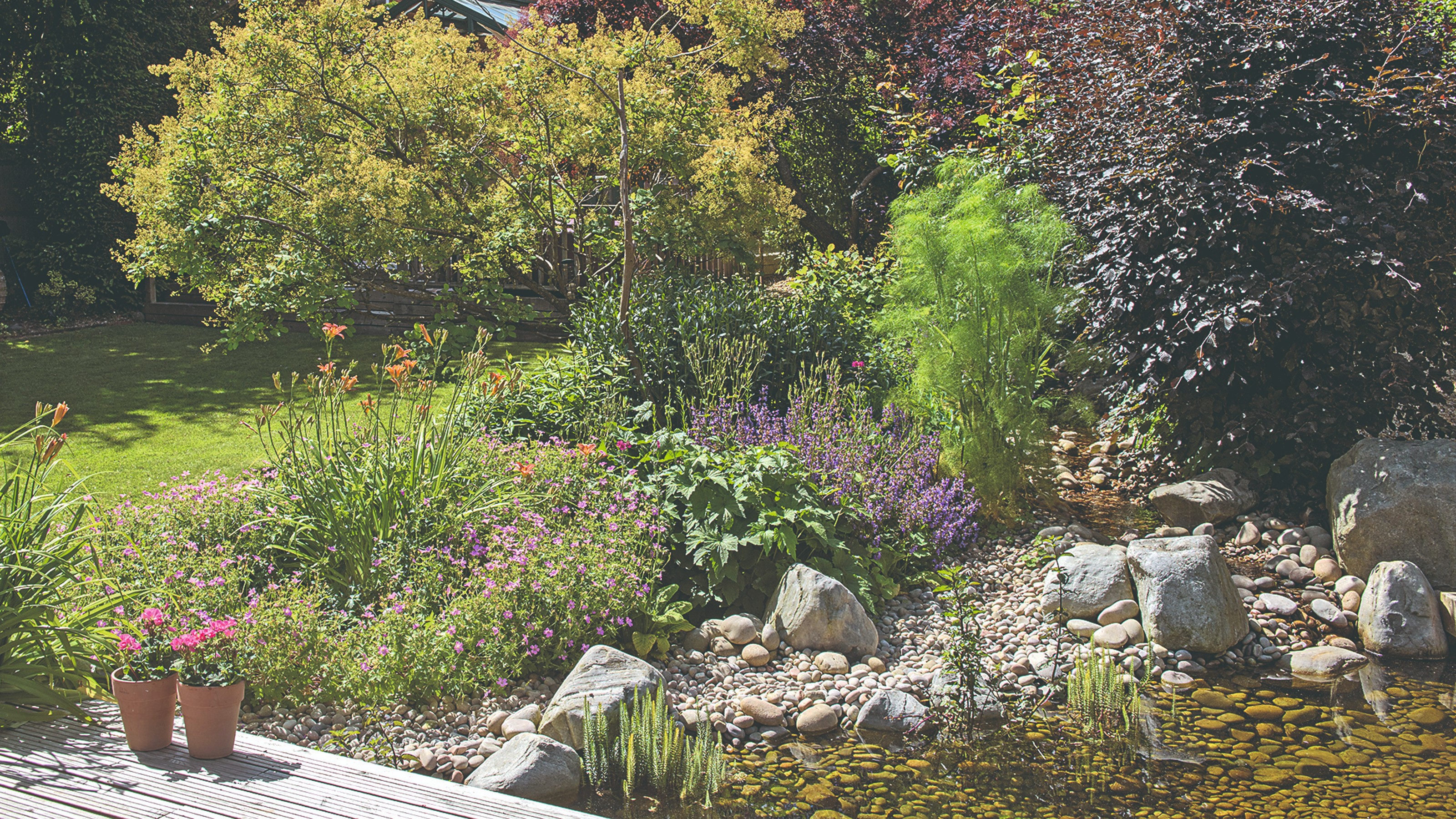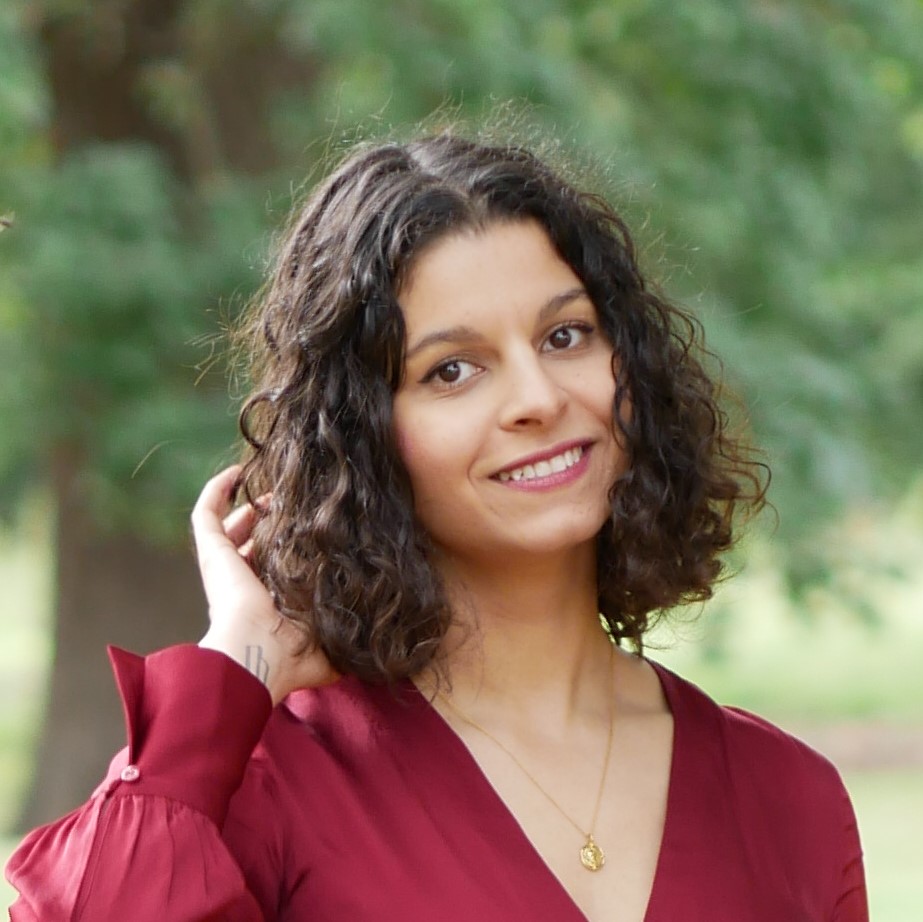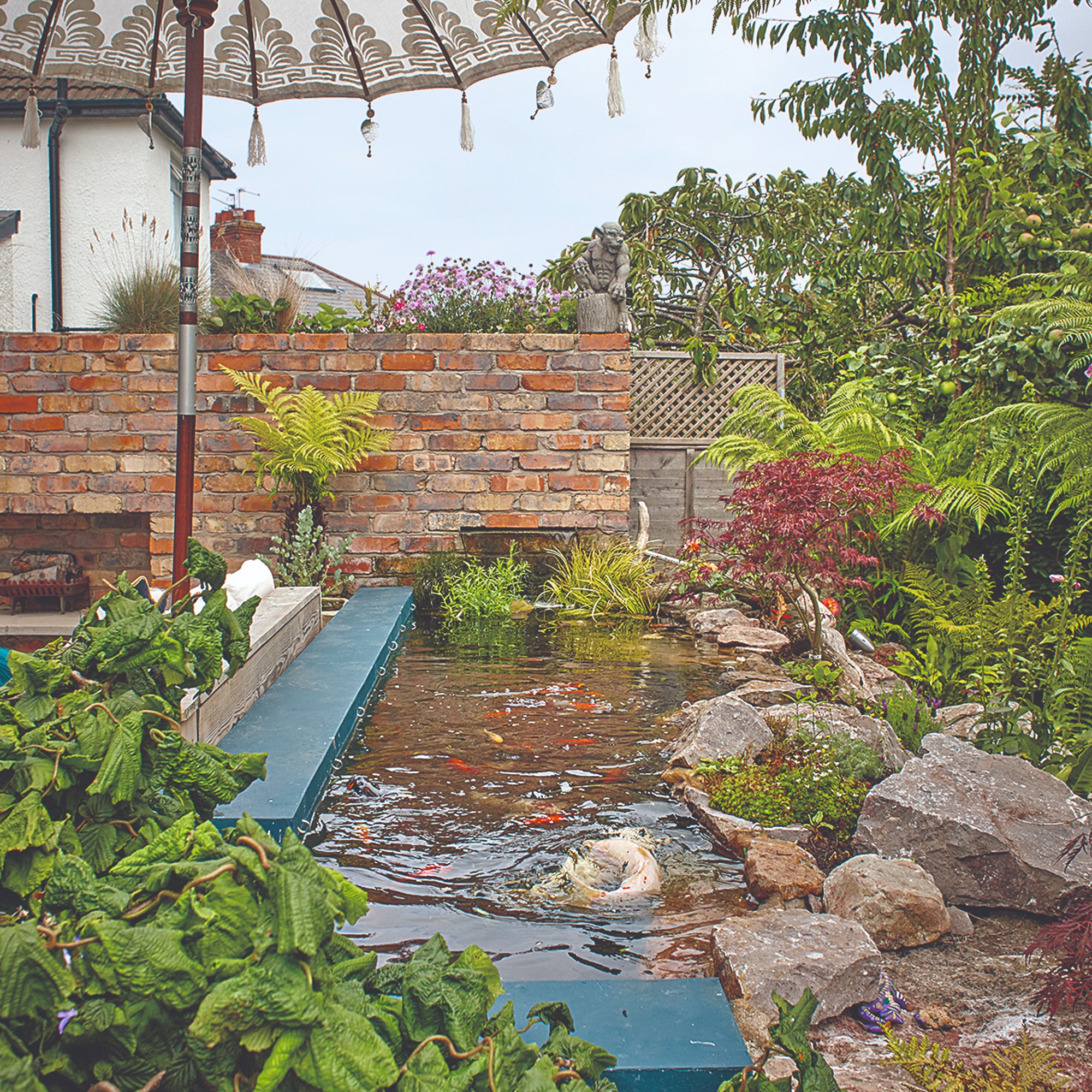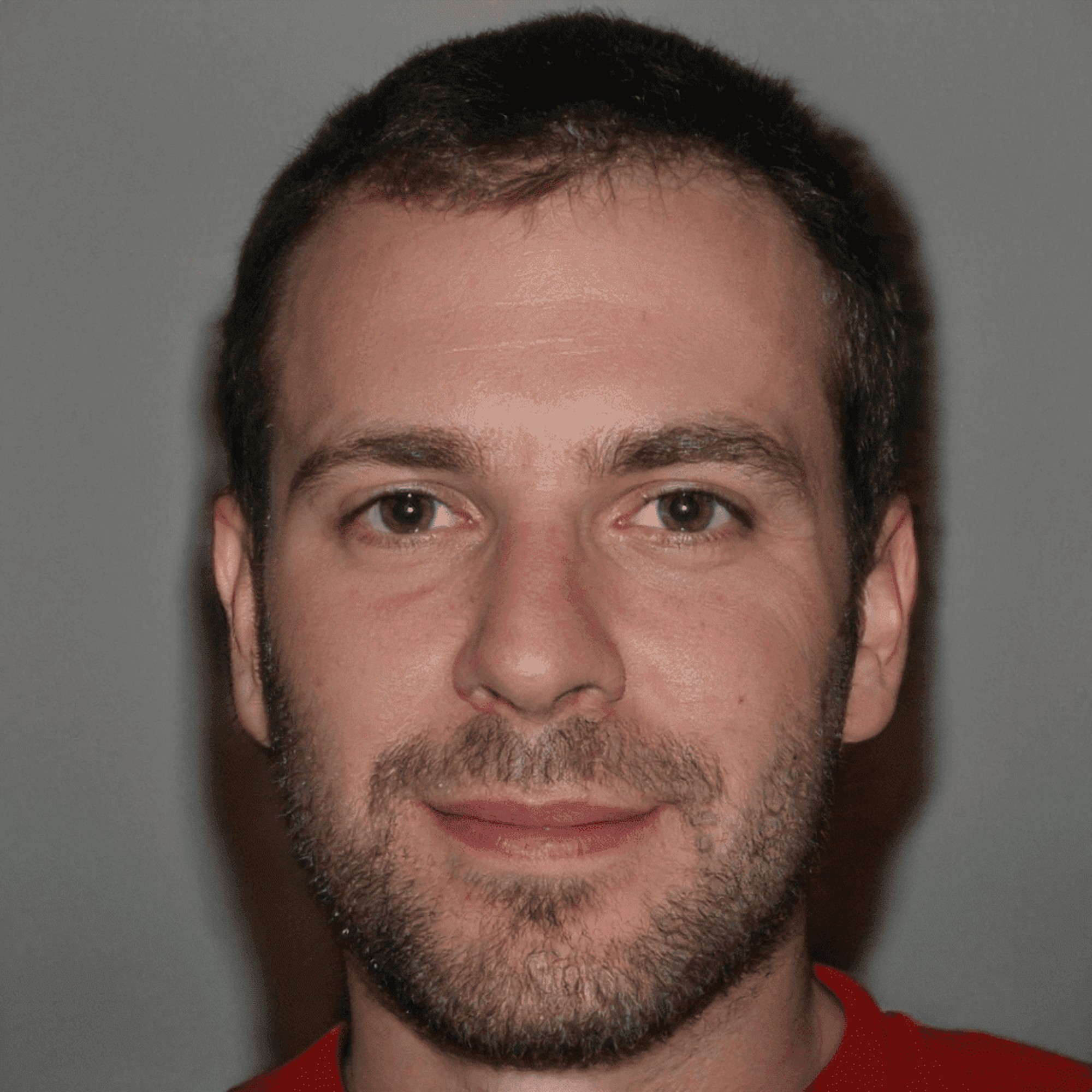What’s a rain garden? The garden style that you’ll never need to water
The ultimate rainscaping idea to recreate in your garden


With all the new gardening terms and trends constantly emerging, few sound as beautifully poetic as a rain garden. But as lovely as it sounds, what is a rain garden? Because our gardens are full of rain on the regular given the lovely British weather but we’re pretty sure that doesn’t make them rain gardens.
And in fact, it doesn’t. This new garden trend is part of larger movements in the gardening world, specifically the rainscaping garden trend and permaculture. That’s a lot of new terms, we know.
While permaculture is a unique approach to gardening creating self-sufficient and sustainable for your plants and ecosystems, rainscaping is a practice that captures and repurposes rainwater in the garden. And it’s these principles that rain gardens are built on too. Our favourite part though? If you build yourself a rain garden, you will never have to water your plants again. The rain will do it for you.

What is a rain garden?
With the likes of horti-futurism making waves, there have been several novelties in the garden space lately. Rain gardens included. After all, it's one of the best ways to flood-proof your garden.
‘A rain garden is a specifically designed garden section that's designed to capture and reuse rainwater runoff from the home - for example from roofs, driveways, patios and other impermeable surfaces,’ says Steve Chilton, garden expert at LeisureBench.
‘It's often shaped like a bowl or has a depression which allows rainwater to be caught and absorbed back into the ground and plants, making the most of the rain that's caught instead of wasting it. It's usually full of plants that adore water and can survive waterlogging for an extended period of time.’


Steve is a passionate and knowledgeable garden expert with several years of experience within the field. As the director of LeisureBench, an industry-leading garden furniture company, Steve has developed strong expertise for all things nature and plants.
It’s the pinnacle of rain harvesting, turning something that’s often wasted into a self-sufficient system that takes care of itself for the most part.
Get the Ideal Home Newsletter
Sign up to our newsletter for style and decor inspiration, house makeovers, project advice and more.
But the benefits of a rain garden don’t stop there.
‘There are several different benefits of rain gardens,’ Steve notes. ‘It takes the water away from your home and directs it into your garden. It attracts pollinators and wildlife, making your garden more biodiverse. And it allows natural plants to thrive.’

FAQs
What is another name for a rain garden?
As much as we love the name ‘rain garden’, there are in fact several other terms this concept is known as.
‘Other names for rain gardens include bioretention basins, bioretention gardens, vegetated basins, stormwater garden and biofiltration garden. They're not to be confused with bioswales, which are designed to slow down heavy rain water instead of helping re-use it,’ Steve explains.
Where is the best place for a rain garden?
Ideally, your rain garden shouldn’t be right next to your house so that it doesn’t damage the foundations, 10 feet away is recommended. And it should lie low so that it naturally collects the rainwater when it falls.
'A rain garden is best placed away from your house, so the water won’t affect the foundations,' says Fiona Jenkins, gardening expert at MyJobQuote.co.uk. 'A lower section of your garden is ideal as the rainwater can easily be channelled down towards it. But do make sure it’s away from tree roots and underground services including cables and pipes.'

What is the maintenance of a rain garden?
‘It's really easy to maintain a rain garden, as you don't need to water it. The trickiest bit of putting together a rain garden is the initial installation,' Steve says.
Fiona agrees, 'Rain gardens are fairly easy to maintain once they’re established. You’ll need to make sure the channels that the rainwater runs along are kept clear. As with any part of the garden, there’ll be some weeding to do. If you have self-seeding wildflowers, you might need to make sure that one species doesn’t take over the space.'
This way, you won’t have to protect your garden from heavy rainfall ever again because that’s when a rain garden really thrives.
Are you getting one now?

Sara Hesikova has been a Content Editor at Ideal Home since June 2024, starting at the title as a News Writer in July 2023. She is now also the Ideal Home Certified Expert in Training on Furniture, and so far has tested 80 different sofas.
Graduating from London College of Fashion with a bachelor’s degree in fashion journalism in 2016, she got her start in niche fashion and lifestyle magazines like Glass and Alvar as a writer and editor before making the leap into interiors, working with the likes of 91 Magazine and copywriting for luxury bed linen brand Yves Delorme among others.
-
 Should your front door colour match your hallway? Interior experts reveal 3 reasons why it should (and 3 reasons it shouldn't)
Should your front door colour match your hallway? Interior experts reveal 3 reasons why it should (and 3 reasons it shouldn't)Are you team matching or contrasting?
By Ellis Cochrane
-
 This £200 limited-time discount makes this Dyson vacuum cheaper than I’ve ever seen it - run don’t walk to Argos for this bargain
This £200 limited-time discount makes this Dyson vacuum cheaper than I’ve ever seen it - run don’t walk to Argos for this bargainIt's the most affordable Dyson on the market right now
By Lauren Bradbury
-
 Martin and Shirlie Kemp’s pastel flower beds has given their Victorian renovation a romantic look - how you can get the look
Martin and Shirlie Kemp’s pastel flower beds has given their Victorian renovation a romantic look - how you can get the lookTheir pastel garden is the cottage garden inspo you've been looking for
By Kezia Reynolds